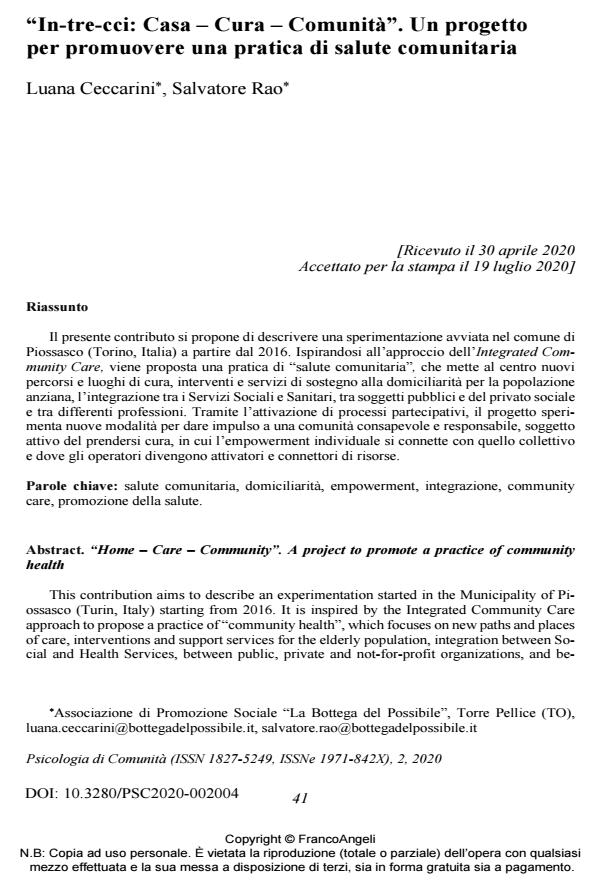"Home ‒ Care ‒ Community". A project to promote a practice of community health
Journal title PSICOLOGIA DI COMUNITA’
Author/s Luana Ceccarini, Salvatore Rao
Publishing Year 2020 Issue 2020/2
Language Italian Pages 22 P. 41-62 File size 383 KB
DOI 10.3280/PSC2020-002004
DOI is like a bar code for intellectual property: to have more infomation
click here
Below, you can see the article first page
If you want to buy this article in PDF format, you can do it, following the instructions to buy download credits

FrancoAngeli is member of Publishers International Linking Association, Inc (PILA), a not-for-profit association which run the CrossRef service enabling links to and from online scholarly content.
This contribution aims to describe an experimentation started in the Municipality of Piossasco (Turin, Italy) starting from 2016. It is inspired by the Integrated Community Care ap-proach to propose a practice of "community health", which focuses on new paths and places of care, interventions and support services for the elderly population, integration between So-cial and Health Services, between public, private and not-for-profit organizations, and between different professions. Through the activation of participatory processes, the project experi-ments with new ways to give pulse to a conscious and responsible community as an agent of care, where individual empowerment connects with collective empowerment and where opera-tors become resources activators and connectors.
Keywords: Community health, home care, empowerment, integration, community care, health promotion.
Luana Ceccarini, Salvatore Rao, "In-tre-cci: Casa - Cura - Comunità". Un progetto per promuovere una pratica di salute comunitaria in "PSICOLOGIA DI COMUNITA’" 2/2020, pp 41-62, DOI: 10.3280/PSC2020-002004